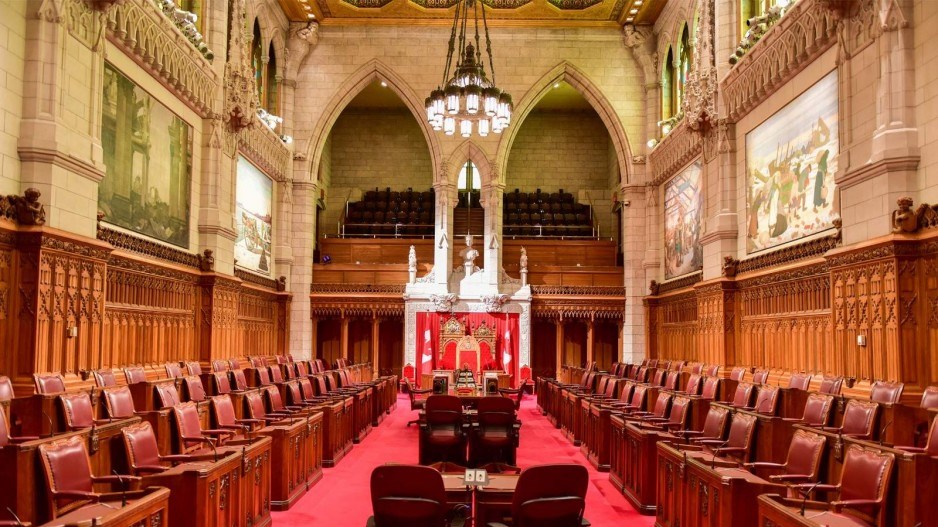Before the entire country became gripped in the fight against the coronavirus, Research Co. asked Canadians about their views of the upper house. Discussions about the Senate of Canada can be extremely toxic, and there has been no shortage of ideas and proposals to make the best of existing statutes.
From 2012 to 2016, the Senate was on the minds of Canadians for the wrong reasons, after the expenses of its members were examined by the auditor general. While the level of attention and dismay from Canadians fell short of what was experienced in the United Kingdom during its parliamentary expenses scandal in 2009, the situation served to harden existing negative perceptions.
The New Democratic Party (NDP) and the Bloc Québécois have had no difficulties arguing for the Senate’s abolition. The Conservative Party of Canada attempted to make some modifications during the tenure of Stephen Harper. The Liberal Party of Canada, following its victory in the 2015 federal election, chose to switch appointments from the prime minister’s desk to an arm’s-length advisory body. Since this modification was enacted, 52 senators have joined the upper house.
Four years have passed since the first arguably non-partisan appointments to the Senate, but Canadians remain unwavering in their wish that, someday, all voters will be able to have a say in the composition of the upper house.
In the survey, only about one in 10 Canadians (9%) says that our country needs a Senate and believes the current guidelines that call for appointed senators should not be modified. Three times as many adults in Canada (27%) think that we do not need a Senate and want all legislation to be reviewed and authorized by the House of Commons.
This leaves one in five Canadians (20%) who are undecided when asked how they feel about the upper house and the largest proportion (45%) who want Canadians to take an active role in the process to choose senators.
Across both genders and all age groups, more than two in five Canadians yearn for this approach. British Columbians and Albertans, at 52% and 51%, respectively, are more likely to support the notion of a Senate where voters have an opportunity to make a selection.
A second question puts forward different options for the Senate of Canada, and there is some consistency. Across the country, 40% of Canadians want to reform the Senate to allow Canadians to elect the members of the upper house. Just over three in 10 (31%) prefer establishing a selection committee that would appoint non-partisan senators. Only 10% want to go back to the process we had before Justin Trudeau’s Liberals formed the government – the prime minister making all appointments at his or her discretion.
While the Reform party advanced the cause of a Triple-E Senate (equal, elected and effective) in the last decade of the 20th century, the highest level of support for electing senators is seen now with Canadians who voted for the NDP in the last federal election (52%). Those who cast ballots for the Conservative party (44%) and the Liberal party (35%) in 2019 are less likely to endorse this type of Senate reform.
Since the beginning of his tenure, Prime Minister Trudeau has named only senators who were recommended by an arm’s-length advisory body and not directly appointed by himself. More than a third of Canadians (37%) believe these changes have made the upper house “better than before.” As expected, Liberal voters are more likely to feel this way (58%) than Canadians who voted for the New Democrats (30%) and the Conservatives (20%).
Even after many instances of interrupted efforts to reform the Senate, Canadians are still hopeful for the future, with more than half (54%) expecting that, one day, voters will “definitely” or “probably” get to elect the members of the upper house. Longing for the chance to vote for senators at one point is highest in Ontario (57%), British Columbia (56%) and Saskatchewan and Manitoba (also 56%).
The survey shows that, while Canadians are not necessarily enthralled by everything that happens in the upper house, there are still some positive feelings about where things are headed. Just over a third of Canadians think the new process of advisory body recommendations has helped, but a larger proportion wants to vote – and more than half dream of eventually holding a paper ballot bearing the names of candidates to the upper house. •
Mario Canseco is the president of Research Co.
Results are based on an online study conducted February 22–25, 2020, among 1,000 adults in Canada. The data has been statistically weighted according to Canadian census figures for age, gender and region. The margin of error, which measures sample variability, is plus or minus 3.1 percentage points, 19 times out of 20.




